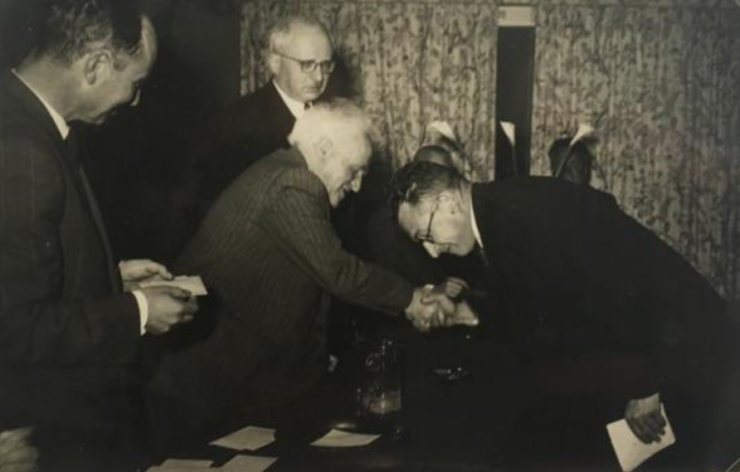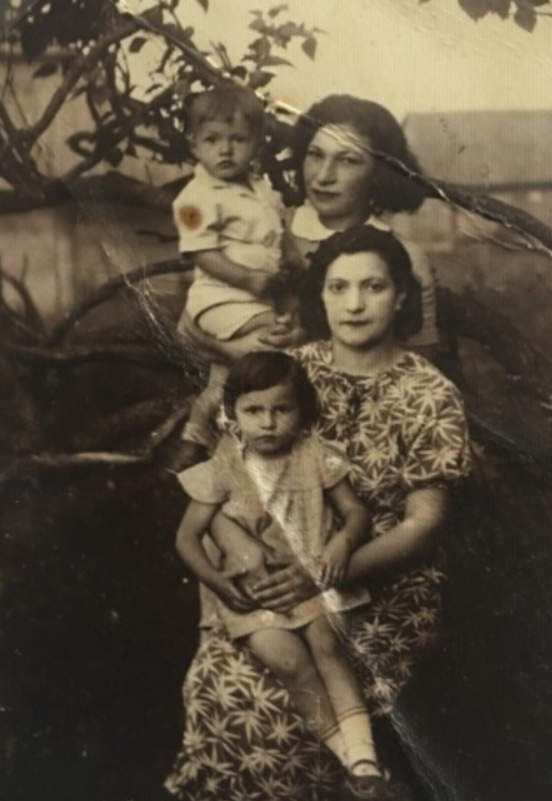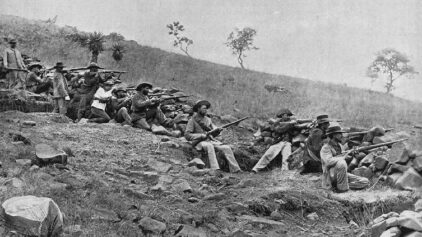Toda raba raba for sharing with us your family history. My wife and I have been looking for a DNA Ancestry site to see where we have been told our families came from, and to also see if she has any trace of Jewish-ness in her… she is hoping… but has no information about her maternal grandfather… We have looked at the other “name brand” sites, but after reading your story and why you started this company, we have decided to go through your services.
Our CEO Gilad Japhet Tells the Stories of His Ancestors Who Were Victims of the Holocaust
- By Gilad


MyHeritage Founder and CEO Gilad Japhet reveals his personal history in honor of this year’s International Holocaust Remembrance Day, in memory of his ancestors who were victims of one of the most tragic human experiences this world has ever witnessed. Read his story below.
Last year, I wrote a post on Facebook dedicated to the memory of my paternal family members from the Patt/Japhet family who perished in the Holocaust.
This blog post commemorates the Holocaust victims from my maternal side, and, specifically, the family of my mother’s mother: the Chwojnik family. Most of my mother’s family was spared from the Holocaust, thanks to the visionary Dr. Arie Leib Chwojnik (Oren), my grandmother’s uncle, born in 1890 in the town of Ruzhany, nowadays in Belarus and previously part of Poland. My passion to learn more about my Chwojnik ancestors was key to my personal interest in genealogy, which began when I was 13 years old. Chwojnik is a very small Jewish family and all Chwojniks are related. I write here about Dr. Chwojnik in more detail because he was such an interesting person, and also because, as you will see below, I owe my existence to him.
It was very rare in those days of severe prejudice — when Jews were banned from admission to universities throughout Europe — for Arie Leib Chwojnik to have managed to enroll in the University of Geneva to study medicine. He submitted a Ph.D. thesis and became a doctor in Otolaryngology. Equally rare was his Jewish wife Esther’s (Ettia) enrollment in the same university to study medicine as well. She became a dentist.
Arie Leib Chwojnik immigrated to Israel in 1922, 25 years prior to its establishment as an independent state, with the help of his brother-in-law, the mythological Dr. Haim Bograshov, founder and principal of the Herzliya Hebrew High School. That was the first Hebrew high school in the country.
As an anecdote, the municipality of Tel Aviv honored Dr. Bograshov and named a street in Tel Aviv after him while he was still alive, a move that he humbly opposed, changing his surname from Bograshov to Boger to avoid being associated with the street! The connection between Dr. Chwojnik and Dr. Bograshov was that they married two sisters from the Mednitzky family: Ettia and Mina.
Once in Israel, Dr. Chwojnik sought to utilize his expertise to provide better medical services to the population than existed at the time. He set up a hospital in his name in Tel Aviv, where patients of all religions were treated. Dr. Chwojnik became so famous for his skills and healing expertise that Arab sheikhs travelled to Tel Aviv to be treated by him from all over the Middle East.
He was a talented and energetic man of many interests. Curiously, he was also a Freemason and was elected head of the Masonic Lodge of Israel in 1944. Dr. Chwojnik foresaw that Jews had no future in Europe in those dark times and worked tirelessly to bring all of his family members to Israel in the 1930s. He single-handedly paid for their journeys, bought them houses to live in, and got them trained for and settled in jobs. Spared from the Holocaust thanks to his deeds, they all owed him their lives.
Among the many family members he saved was his niece, my maternal grandmother Chana Chwojnik. She immigrated to Israel in 1930 from Ruzhany, he took her in to live in his home, and she became a nurse at his hospital — a profession she maintained for the rest of her life. Today the Chwojnik hospital no longer exists, and its Bauhaus-style building in Tel Aviv was renovated and reinvented as Israel’s Institute of Certified Public Accountants (see photo below).

Travel back in time: The same building in the early 1930s, when the Chwojnik hospital was being built. My grandmother Chana Chwojnik is at the center, wearing a white scarf, and next to her is her aunt Ettia Mednitzky, wife of Dr. Chwojnik.
Another highly respected member of the Chwojnik family was my grandmother Chana Chwojnik’s brother, Dr. Menachem Chwojnik. He was a teacher who also played chess as a hobby. After he won the chess championship of the city of Krakow in Poland several times, he was selected to be a member of Poland’s national chess team and represented Poland at the 2nd Chess Olympiad in 1928. The Polish chess team was extremely strong. Most of its players were Jewish, and, with the help of my grandmother’s brother, they won Poland the bronze medal in the world Chess Olympiad that year. The Polish team continued to win medals in the Olympiad almost every year thereafter, until 1939. After that year, the vast majority of Poland’s Jews were exterminated or deported and Poland was never able to regain its former glory.
Menachem Chwojnik survived WWII in Europe and immigrated to Israel in 1949. Despite his advancing age and exhaustion from the tribulations of surviving the war, he returned to play chess. To everyone’s surprise, he showed that he still had sparks of genius. He became Israel’s first chess champion in 1951, and then, already in his 50s, returned three times to participate in the world Chess Olympiad, now representing the nascent State of Israel. He was a teacher of physics in the Herzliya Hebrew High School and was well known for his wisdom and sense of humor. He died of a heart attack at the age of 60 — the men of the Chwojnik family had weak hearts and many of them succumbed to heart attacks at a relatively young age.

Dr. Menachem Chwojnik bowing to David Ben Gurion, Israel’s first prime minister, after winning Israel’s chess championship in 1951.
Thanks to Dr. Arie Leib Chwojnik, most of the Chwojnik family members immigrated to Israel and were saved from the perils of the Holocaust. This included Dr. Chwojnik’s mother Sara Henia Chwojnik, who is my great-great-grandmother (and after whom my mother Sara was named), all of his siblings, and many of his nephews and nieces. One nephew who didn’t make it was Abraham (Abrasha) Chwojnik, my grandmother’s first cousin, who studied to become a lawyer in Vilnius, the capital of Lithuania. He joined the partisan resistance movement founded by Abba Kovner in the Vilna Ghetto, whose motto was, “We will not go like sheep to the slaughter”. Abrasha Chwojnik became one of the leaders of the resistance. He was caught by the Nazis and executed by hanging. He received a medal of courage from Poland after his death. The picture below hints at his fierce personality, contrasting with his gentle facial features.
One of Abrasha’s brothers, Yosef (Ofka) Chwojnik, did make it to Israel and became the head of the flight school of Israel’s legendary air force.
Abrasha’s mother, Dobe Chwojnik (born Lukaszewski), was doomed to become a victim of the Holocaust. She had immigrated safely to Israel with two of her sons (Abrasha’s brothers) and lived in Israel for several years; but just before WWII she made the mistake of travelling back to Europe for a visit, and she died there during the war. The photo below shows her in the center, with Abrasha on the left and Ofka on the right — it was taken years before she immigrated to Israel and went on the fateful trip back to Europe.
One of my grandmother’s sisters, Ahuva (Libke) Chwojnik, declined the invitation to come to Israel. Perhaps it was her husband’s decision. She was married to Israel Bielous who owned a hardware store in Ruzhany, and they had two small children, Miriam and Chaim. They preferred to stay behind in Ruzhany. All four of them were murdered in the Holocaust. They were, respectively, my mother’s aunt, uncle, and first cousins.

My grandmother’s sister Libke Chwojnik (wearing a dress with a pattern), with her children Miriam and Chaim, all of whom died. Her sister Leah Chwojnik (top right) came to Israel with Dr. Chwojnik’s help and was saved.
Years later in Israel, when my great-grandmother Rachel Chwojnik (born Diskin) would hold my mother in her hands, she would occasionally burst into tears, recalling Miriam Chwojnik, her firstborn granddaughter, who was killed as a child.

Miriam (Mira) Bielous, daughter of Libke Chwojnik. Murdered at age 11. She is a first cousin of my mother.

My grandmother Chana Chwojnik (left) and her older sister Libke Chwojnik (right), who stayed behind in Ruzhany and died in the Holocaust. This photo was taken just before my grandmother Chana left her former life behind and immigrated to Israel. For Chana, this photo was meant to be a farewell souvenir from her sister Libke. They never saw each other again.

Naturalization petition in Israel (Mandate of Palestine) of my grandmother’s sister Leah Chwojnik, who goes here by the anglicized name Liza. She names her two sponsors: Dr. Bograshov and Dr. Chwojnik. It was filed in 1941. A few years later, Leah volunteered to the Auxiliary Territorial Service (ATS; often pronounced as an acronym), the women’s branch of the British Army during the Second World War, to help fight against the Germans. Leah never married, and everyone called her “Doda Leah” — Aunt Leah.
My grandmother Chana Chwojnik prospered in Israel. She married Shmuel Isaacson and had two daughters: my mother Sara and my aunt Tzippora. Between them, they have 11 children and 40 grandchildren.
This is a small part of the story of one Jewish family, the Chwojnik family of Ruzhany, but it represents many similar stories. This family did not succumb to the Nazis and managed to build a new future for itself in Israel. MyHeritage exists because they survived.
I dedicate this post to the memory of my Chwojnik family members who perished in the Holocaust, among millions of others. May their memory be blessed.

















Roger Scanland
January 27, 2018
A sobering, inspiring and ultimately triumphant story. Thank you for sharing it.